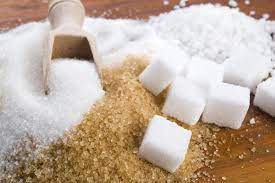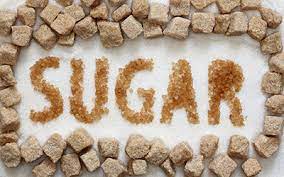The Real Truth About Sugar
Sugar is everywhere. From the morning coffee you sip to the dessert you savor after dinner, it’s a staple in modern diets. But what is the real truth about sugar? Is it the sweet delight we’ve been led to believe, or is it a hidden health hazard lurking in our food? This article dives deep into the world of sugar, exploring its history, types, health effects, consumption patterns, and practical ways to manage its presence in our lives. By the end, you’ll have a clearer picture of sugar’s role in your diet and how to make informed choices.
A Brief History of Sugar
Sugar’s story begins thousands of years ago. Originating in New Guinea around 8000 BCE, sugarcane was first domesticated for its sweet juice. By 500 BCE, sugar had spread to India, where it was refined into a crystalline form. Known as “khanda” (the root of the word “candy”), this early sugar was a luxury, used sparingly in religious ceremonies and as a status symbol.
By the Middle Ages, sugar reached Europe via trade routes, but it remained expensive and rare. Only the wealthy could afford it, often using it as a spice or medicine. The Age of Exploration changed everything. European colonization of the Americas led to vast sugarcane plantations, powered by enslaved labor. By the 18th century, sugar became more affordable, fueling the rise of tea, coffee, and chocolate consumption in Europe.
The Industrial Revolution further transformed sugar’s role. Mass production made it cheaper, and it became a staple in households. By the 20th century, sugar was no longer a luxury but a key ingredient in processed foods, from sodas to cereals. Today, sugar is a global industry worth billions, but its accessibility has sparked debates about its health implications.
Types of Sugar: Natural vs. Added
Not all sugars are created equal. Broadly, sugars fall into two categories: natural and added. Understanding the difference is key to making informed dietary choices.
- Natural Sugars: These occur naturally in foods like fruits (fructose), vegetables, and dairy (lactose). Natural sugars come with nutrients like fiber, vitamins, and minerals, which help the body process them more slowly, preventing rapid blood sugar spikes.
- Added Sugars: These are sugars or sweeteners added during food processing or preparation. Common examples include table sugar (sucrose), high-fructose corn syrup, and syrups like agave or honey. Added sugars provide empty calories, meaning they offer little to no nutritional value.
Added sugars hide in many products, often under names like maltose, dextrose, or cane juice. Reading ingredient labels is crucial, as even “healthy” foods like yogurt or granola bars can contain high levels of added sugars. The World Health Organization (WHO) recommends limiting added sugars to less than 10% of daily calories, ideally below 5% for optimal health.
Health Impacts of Sugar
Sugar’s effects on health are complex and depend on quantity, type, and individual factors. While small amounts of sugar can fit into a balanced diet, excessive consumption is linked to numerous health issues.
Short-Term Effects
Consuming sugary foods or drinks causes a rapid rise in blood glucose levels, providing a quick energy boost. However, this is often followed by a “crash,” leaving you feeling tired or irritable. High sugar intake can also lead to cravings, as it stimulates the brain’s reward system, similar to addictive substances.
Long-Term Effects
Chronic overconsumption of added sugars is associated with serious health risks, including:
- Obesity: Sugary foods are calorie-dense but often lack satiety, leading to overeating. Studies show a strong link between sugar-sweetened beverages and weight gain.
- Type 2 Diabetes: Excessive sugar intake can lead to insulin resistance, a precursor to diabetes. The pancreas struggles to regulate blood sugar, increasing disease risk.
- Heart Disease: High sugar consumption is linked to higher levels of triglycerides, a type of fat in the blood, which increases the risk of heart disease.
- Dental Health: Sugar feeds bacteria in the mouth, producing acids that erode tooth enamel, leading to cavities and gum disease.
- Liver Damage: Excess fructose, particularly from high-fructose corn syrup, can overload the liver, contributing to non-alcoholic fatty liver disease.
However, not all sugars are equally harmful. Natural sugars in whole foods, like fruits, are less concerning because their fiber content slows absorption, reducing blood sugar spikes. The key is moderation and prioritizing nutrient-dense foods.
Sugar Consumption Trends
Global sugar consumption has skyrocketed over the past century. In the United States, the average person consumes about 17 teaspoons of added sugar daily, far exceeding WHO recommendations. This is driven by the proliferation of processed foods and sugary beverages, which account for a significant portion of sugar intake.
Children and adolescents are particularly at risk, as sugary snacks and drinks are heavily marketed to them. In many countries, soda, energy drinks, and sweetened coffees are staples, contributing to rising obesity rates. Developing nations are also seeing increased sugar consumption as processed foods become more accessible.
Interestingly, public awareness is growing. Campaigns to reduce sugar intake, like soda taxes and labeling laws, are gaining traction. However, the food industry often resists these measures, arguing that personal choice should prevail. Meanwhile, “low-sugar” or “sugar-free” products are booming, though some rely on artificial sweeteners with their own health concerns.
Practical Tips for Reducing Sugar Intake
Cutting back on sugar doesn’t mean giving up sweetness entirely. Here are practical strategies to reduce your intake while still enjoying food:
- Read Labels: Check ingredient lists for hidden sugars. Look for terms like syrup, nectar, or anything ending in “-ose” (e.g., glucose, maltose).
- Choose Whole Foods: Opt for fresh fruits, vegetables, and whole grains, which contain natural sugars and nutrients. A piece of fruit can satisfy a sweet craving healthily.
- Limit Sugary Drinks: Replace sodas and sweetened coffees with water, herbal tea, or unsweetened sparkling water. If you need flavor, add a slice of lemon or cucumber.
- Cook at Home: Preparing meals allows you to control ingredients. Use spices, herbs, or natural sweeteners like fruit puree to add flavor without added sugars.
- Gradual Reduction: Cut back on sugar slowly to adjust your palate. For example, reduce the sugar in your coffee by half a teaspoon each week.
- Beware of “Healthy” Traps: Foods marketed as “low-fat” or “natural” often contain added sugars to compensate for flavor. Always check the nutrition facts.
- Plan Snacks: Keep healthy snacks like nuts, yogurt, or fruit on hand to avoid reaching for sugary processed options.
Reducing sugar takes effort, especially in a world where it’s so prevalent. Start small, set realistic goals, and focus on sustainable changes. Over time, your taste buds will adapt, and you may find you prefer less sweetness.
Conclusion
Sugar is a complex topic. It’s a source of joy in small doses but a potential health risk when overconsumed. By understanding its history, types, and effects, you can make informed choices about your diet. The key is balance: enjoy natural sugars in moderation, minimize added sugars, and prioritize nutrient-rich foods. With awareness and practical strategies, you can take control of your sugar intake and lead a healthier life.
The real truth about sugar is that it’s neither a villain nor a hero—it’s a substance to approach mindfully. Armed with knowledge, you can navigate the sweet landscape of modern food and make choices that support your well-being.






